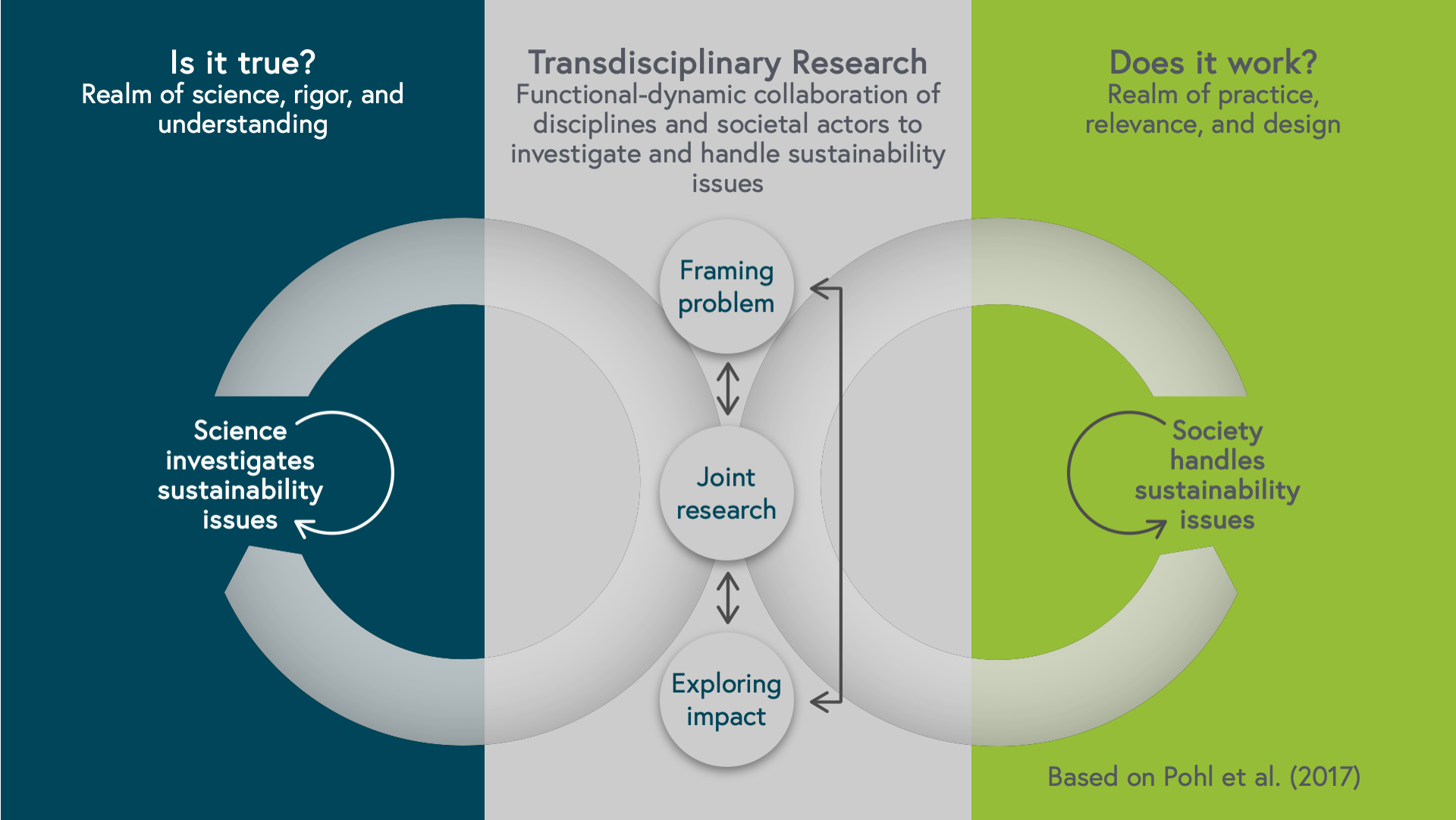TRANSDISCIPLINARITY – INTRODUCTION AND CLARIFICATION
2.6
Societally relevant and scientifically valid
With transdisciplinary research (TDR) we try to link two processes (see the two bold arrows in the diagram below). The arrow on the right side stands for society handling sustainability issues. The arrow on the left side shows research for sustainable development. Both arrows come together in TDR to jointly frame problems, to jointly conduct research, and to jointly explore impact.
If TDR brings together science and practice, it also brings together the respective rationalities. In the realm of science, the driving question is: ‘Is it true?’. Scientists want to understand how things are. Different disciplines, however, might have different ideas about exactly what truth is and whether and how far it can be achieved. Or what comprises solid evidence for a truth claim.
Although the specific ideas about truth might differ from discipline to discipline, the underlying goal in the realm of science stays the same: To describe things as they really are. The typical mechanism to check the validity of research results is peer review. Peer review means that other experts in the field critically read through an expert’s publication, and check whether the described methods and results are correct.
In the realm of practice, the main question is not ‘Is it true?’ but rather ‘Does it work?’. If we want to change how society deals with sustainability issues, we have to change existing or implement new technologies, laws, products, or social habits. Such new approaches have to work.
If, for instance, some people decide to change their habits and become vegan, this requires vegan products to be available for purchase on the market. Or, if a larger amount of electricity should be produced by solar panels from private households, this requires, amongst other things, panels that work technically, an electricity market that works for private solar panel producers economically, and laws that allow panels to be put on roofs. The typical mechanism to check whether something works is to put it into practice, often as a test run. If it works, no further justification is needed.
 Transdisciplinary research process
Transdisciplinary research process
One of the challenges of TDR is balancing between the world of science and that of practice. There are a number of tensions in the relationship: Some problems might be ‘hot topics’ in certain disciplines but currently not of practical relevance. This is the case with genetically modified seeds in Switzerland, which are researched but will not be released for political reasons.
Another tension is that not all insights that are true are of practical relevance. And what is of practical relevance may already be scientifically well researched. In general, scientific rigour and practical relevance do not have to be conflicting aims but need to be balanced in transdisciplinary projects1.
Can you think of other challenges that might arise as the realms of science and practice come together? Maybe it is helpful to answer this question based on one of the cases shown in this course? Write down your thoughts or make a mind map with possible challenges.
Author: Prof. Dr. Christian Pohl
-
Pohl, C., Krütli, P. & Stauffacher, M. (2017): Ten reflective steps for rendering research societally relevant. GAIA, 26(1), 43-51. ↩
